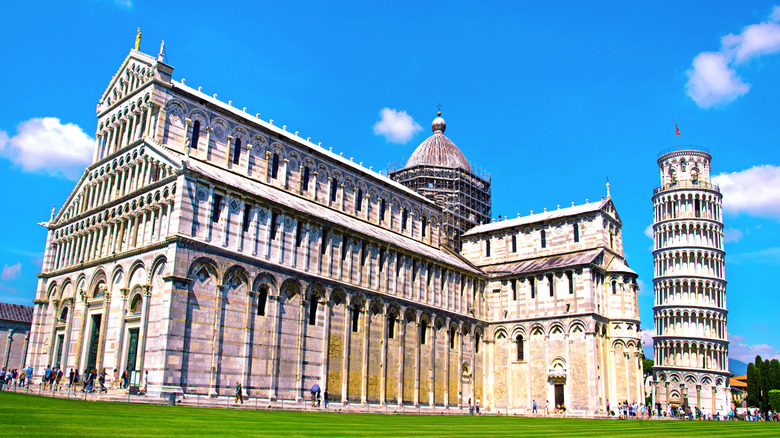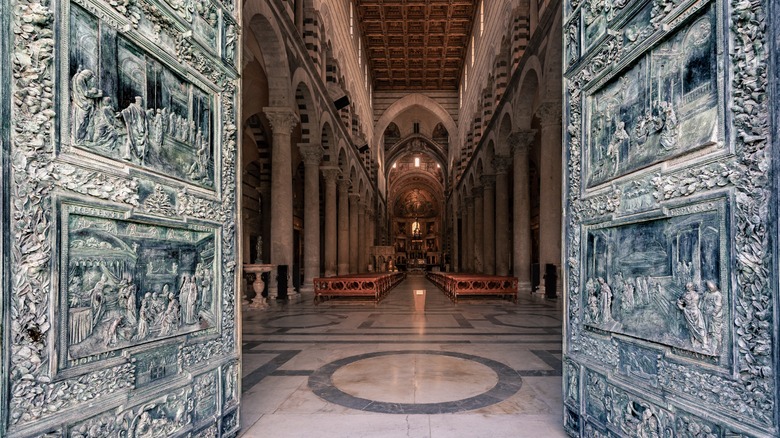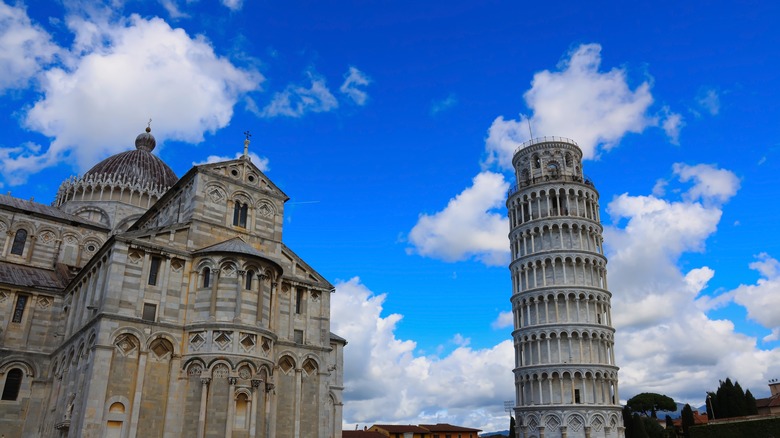There are certain things most tourists do when they visit Italy. You go to the Coliseum and pose like a gladiator. You wander the streets of Pompeii to discover what the volcanic eruption did in 79 C.E. You go to the Leaning Tower of Pisa (Torre Pendente) and take a pic to make it look like you’re holding it up, just like people have since cameras appeared in the world.
The tower is in its eighth century of existence and has been leaning since five years after it was finished. While that is certainly interesting, there isn’t really much to it. That picture has been taken by millions of tourists, and the area around it…well, if you like being accosted by trinket vendors and holding tightly to your wallet so you don’t get pickpocketed (that happened to us), we have another suggestion for you. If you’re in that area, visit the Duomo di Pisa instead.
This gorgeous structure is close by. In fact, even if you do take your generic pic, you are only a few minutes away by foot. It’s right next to the tower, as you can see in the picture. Let’s take a look at this lovely building that is just under a millennium old.
All about the Duomo di Pisa

The Duomo di Pisa’s real name is Duomo of Santa Maria Assunta. Construction on the cathedral started in 1063 C.E. (consecrated in 1118 C.E.), and it’s a blend of styles. Some of it, like the elliptical dome, was influenced by Moorish Islamic mosques inside, as well as the striped marble you’ll see all over. It’s been added to over the centuries, with the Vergine in gloria e Santi fresco added in the 17th century, and the astonishing sculpture from the 14th century pulpit designed by Giovanni Pisano.
If relics are of interest to you, the Duomo houses the body of Pisa’s patron saint Ranieri. Emperor Henry VII (1269-1274 C.E.) who tried to add Italy to the Holy Roman Empire lies there as well. Another thing you should see while you’re there is the stunning Camposanto cemetery right behind the Duomo. Founded in 1277, the first person buried there was put in the center of Camposanto, which had holy soil from Palestine from the Second Crusade.
What to know before you go to the Duomo di Pisa

The cathedral is free to visit, as is the Blessed Sacrament Chapel. Like any trip to a church in Italy, you’ll have to dress respectfully by covering your shoulders and knees. If you don’t have a scarf with you, trust us, there will be a lot of vendors running up to you to try to sell you one. Just bring your own. You may also attend a mass there if you are so inclined.
Opening and closing time varies through the year, so make sure to check. Generally it opens at 10 a.m. and closes at 12:45 p.m., then from 2 to 5 p.m. from November-February. It’s open until 6 p.m. in March, 8 p.m. from April through September, and until 7 p.m. in October. Again, check before you go. Remember that this is an active church as well as a tourist attraction, so things can change.
Before we leave you, here’s something to keep in mind. This may sound silly, but maybe don’t mention the town of Lucca while you’re in Pisa. We’ve seen the glares you get if you say you’ve just been or if you’re about to go. There is a major rivalry between Pisa and Lucca that has been around since the 11th century. (Don’t tell them we said it, but both cities are worth a visit.) Finally, the Tower is right there, and you can now climb to the top, so if you don’t mind a line, go for it.

